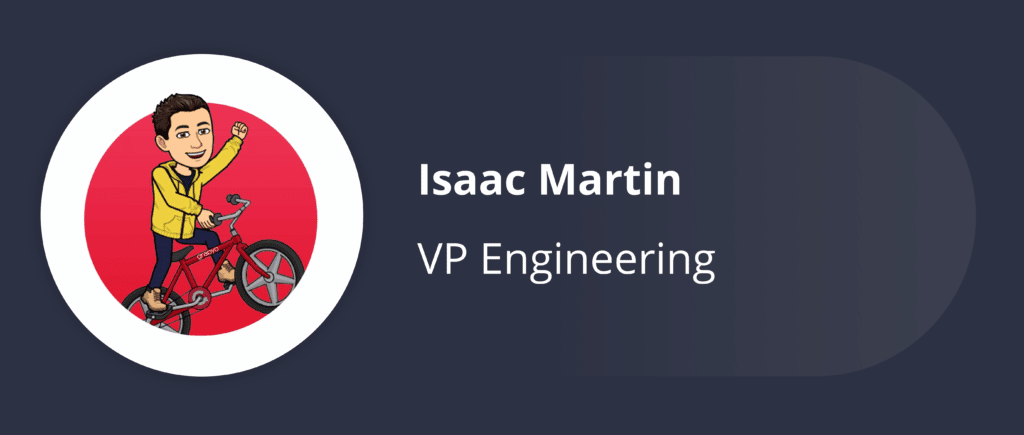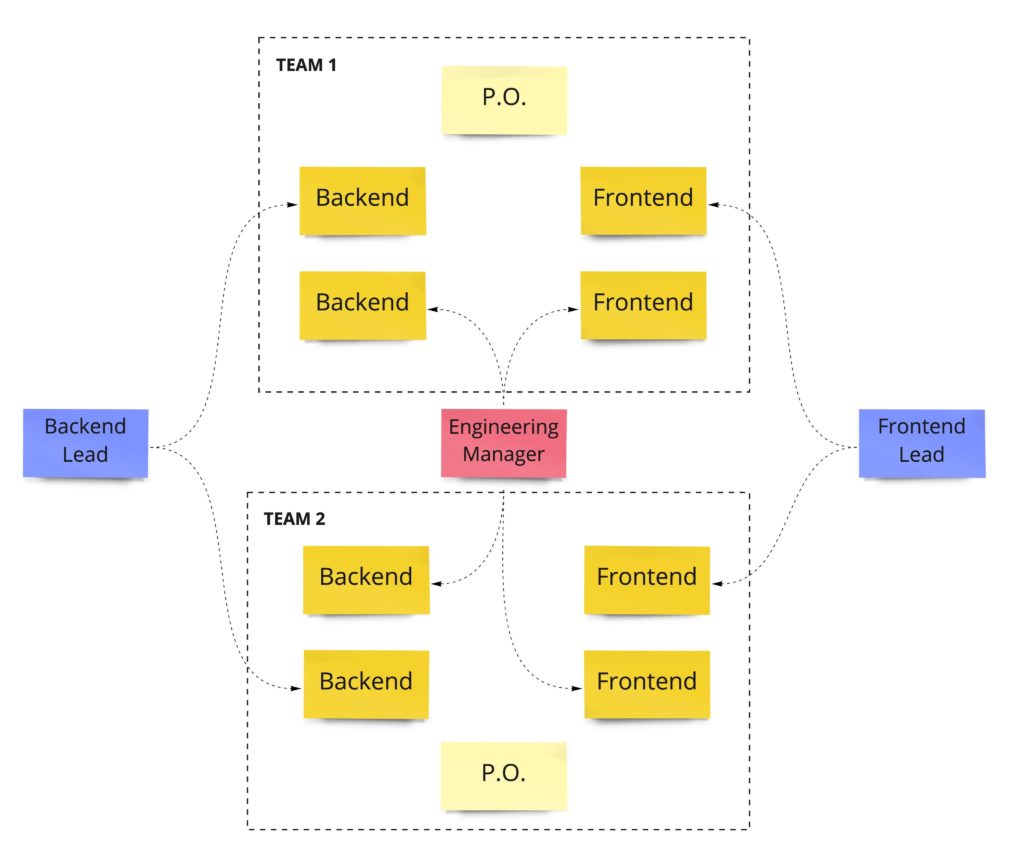The evolution of engineering management at Grabyo

I’ve had the pleasure of seeing Grabyo growing from the startup size with about five engineers to its current size of about 50 employees. During this process, I think I can identify four major milestones in our engineering management evolution.
From CTO to VP Engineering
Management was easy back in the day, we had a very flat team, and everyone was happy with a poorly defined set of responsibilities with bi-yearly performance reviews.
However, when the team reached the 10/12 engineers mark, our CTO started spending too much time on people management rather than technology.
Under these circumstances is when I got promoted to the role of VP Engineering to bring better processes and structure. We introduced agile methodologies like Scrum and Kanban, defined small teams and departments, and created a formal performance review process.
The introduction of team leads
As you can imagine, with 10/12 direct reports, it was challenging to be on top of people, projects and technology. After a couple of additional hires, we quickly found out that we needed more help around management. Our solution to the problem was to utilise some of the senior engineers in the team to fill in the management gaps with the more senior engineers. As a consequence, the hybrid role of team leads was born.
This model had some benefits. For example, senior engineers could easily coach and mentor junior engineers (these junior engineers generally learn from there daily and aspire to become them in the future).
However, this solution came with more drawbacks than we anticipated. Some examples are:
- Being a solid and respected senior engineer in a team doesn’t mean that you have the right skills and qualities of a good manager. Technology challenges are very different from people challenges!
- In general, you want your best engineers to focus on technology, where they shine.
- A split role like this means a split on the engineer’s focus which always translates to doing a poor job in one of the two areas. In our case, management tasks usually had a lower priority.
The first Engineering Manager
Consequently, when the team reached the headcount of 20, we introduced a pure management role: The Engineering Manager!
This Engineering Manager had a much stronger focus on people management, and this allowed to bring significant improvements in different areas:
- This manager could have more direct reports (10/15 instead of the usual 2/3 for team leads).
- We reduced the number of direct reports for all senior engineers increasing their impact on technical challenges.
- We started to define bi-weekly 1 to 1 meetings between managers. This process increased our team happiness and retention as issues were raised and addressed when they happened rather than bi-annually.
- We could introduce 360 performance reviews and provide much better growth plans for our engineers.
- We started to take our Agile practices to the next level and started looking at performance metrics to help us drive improvements in different areas of our software development process.
With this new hybrid model (engineering managers and team leads), we reached the team’s mark of about 30 engineers. This picture showcase the management lines we used to have at this stage:

At the end of 2019, we faced a significant growth phase where we wanted to take the team from around 30 up to 50 employees. By this time, we knew that we needed to hire more engineering managers.
The current model
With these premises, we got to the model that we are implementing today:

As you can see, we are moving away from the team leads role in this new structure. Instead, Engineering Managers perform all line management duties, and they own the line management of an entire team.
This model has provided us with the following benefits:
- Senior engineers should no longer have to perform management tasks unless they wish to pursue a management career.
- The Engineering Manager owns the delivery and performance of the entire team. His impact on this area for the team gets increased as he is line managing all team members.
- The Engineering Managers serves as the main bridge between product and technology to ensure the right balance between product and technical debt.
We spent long hours researching and deciding how the management structure should work, and I can proudly say that the new format works better and brings much value. I hope this blog post helps you to decide in case you are going through a similar journey.
Thanks for reading!
We’re hiring!
We’re looking for talented engineers in all areas to join our team and help us to build the future of broadcast and media production.